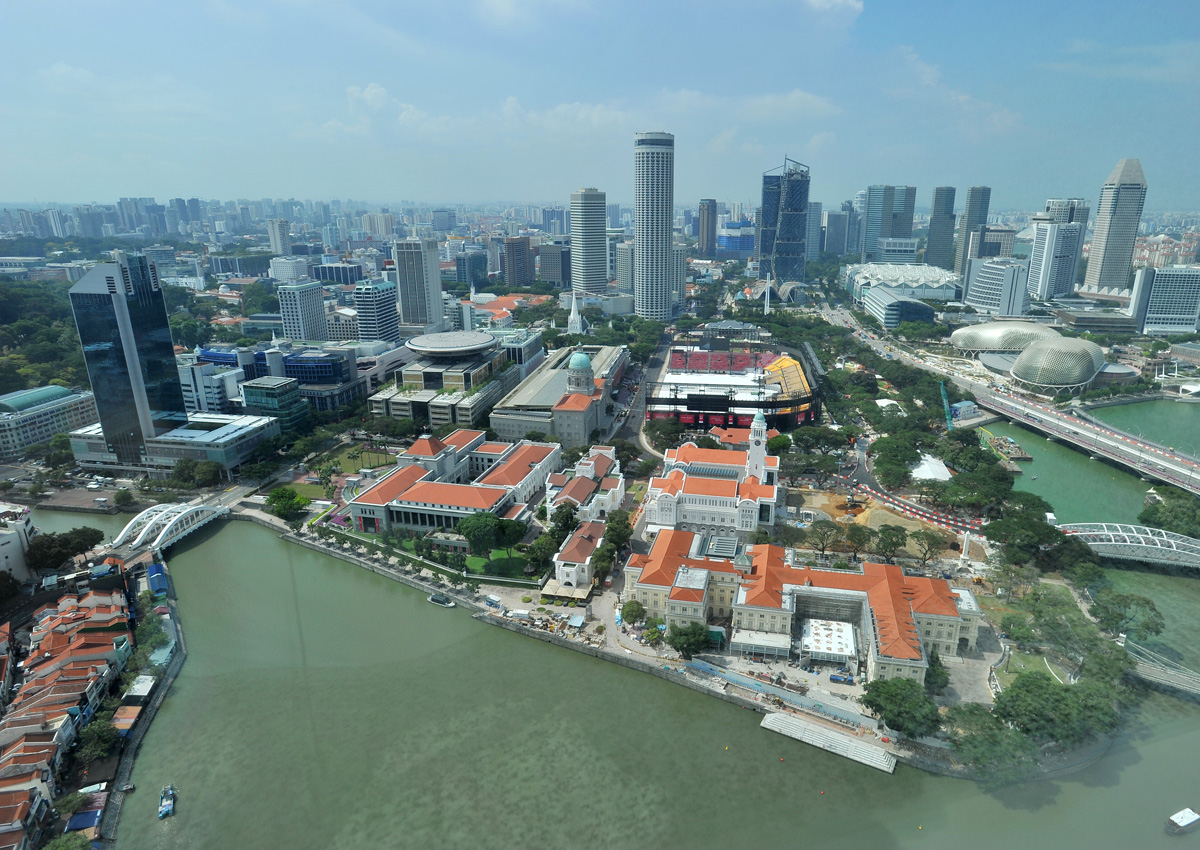SINGAPORE, Oct 25 (Reuters) – A subdued growth outlook for Singapore’s trade-reliant economy is expected to keep inflationary pressures modest, the central bank said on Tuesday, highlighting a bumpy road ahead for the city state amid lingering weakness in global demand.
Singapore’s economy is likely to have a small negative output gap in 2016, and the gap could widen slightly next year, the Monetary Authority of Singapore (MAS) said in its half-yearly macroeconomic review.
“Amid a subdued outlook for GDP growth, emerging slack in the labour market, and contained imported inflation, the medium-term outlook for MAS core inflation is for it to trend gradually towards the historical average of 2 percent.”
There could be downside risks to the inflation outlook if weakness in global demand persists, it added. “Cross-border spillovers of disinflationary pressures may pose some downside risks to Singapore’s inflation outlook, taking into account the possibility that weak global demand could persist for an extended period of time,” the MAS said.
Earlier this month, the central bank held its exchange-rate based monetary policy steady despite a surprisingly sharp economic contraction in the third quarter.
The MAS said a neutral policy stance will be needed for an”extended period”, underscoring a dim outlook for the economy with a growing number of analysts saying the risk of a recession meant the central bank could be forced into an off-cycle easing.
Over the past two years, Singapore’s economy has been hobbled by a slowdown in China, weak global demand and falls in global oil prices.
The MAS said the cumulative effects of its policy easings since January 2015 will continue to provide support to economic growth and help ensure medium-term price stability.
The MAS reiterated that core inflation is expected to average around 1 percent this year and rise to 1-2 percent in 2017.
Energy-related components will begin to contribute positively to inflation, the central bank said.
Global oil prices have risen nearly 38 percent so far this year, but are still down more than 55 percent from their mid-2014 peak above $115 a barrel.
The all-items consumer price index is likely to turn positive in the fourth quarter of this year, the MAS said. It kept its forecast for headline inflation to rise to 0.5-1.5 percent in 2017 from around -0.5 percent this year.
All-items CPI has declined from a year earlier for a record 23 straight months, weighed down by falls in oil prices, lower housing costs and falls in the prices of car permits.
The central bank said its analysis suggests that “nearly three-fifths of the effects from MAS’ past policy easing moves since January 2015 have yet to be transmitted through to the economy.”






